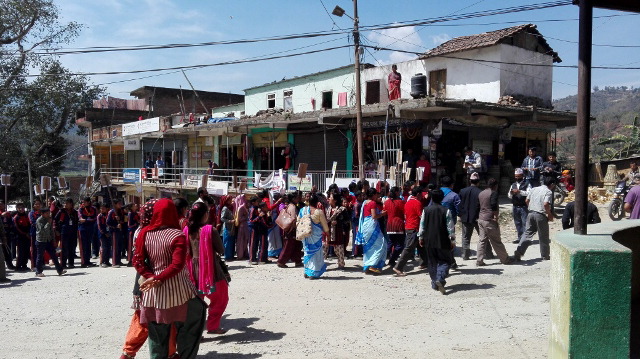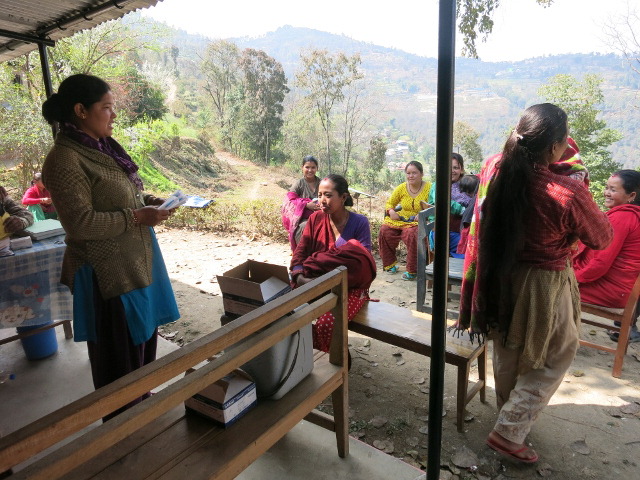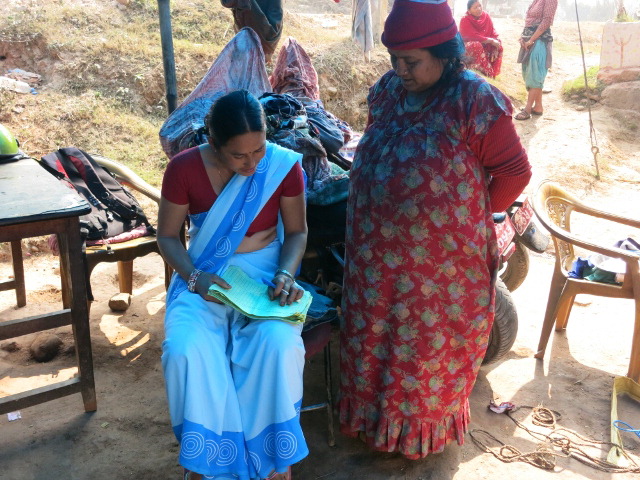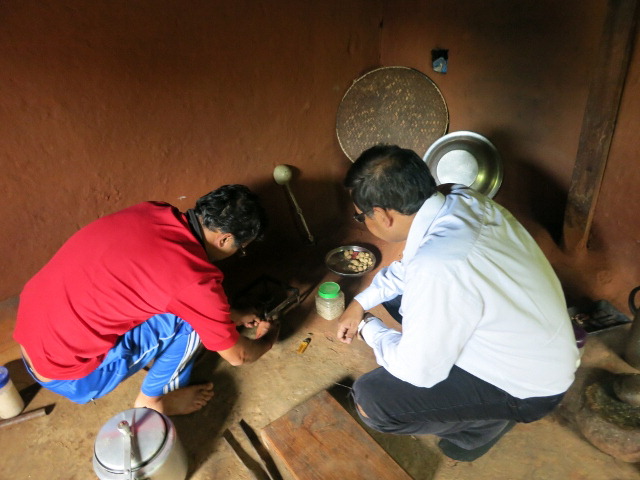|
PARTNERSHIPS FOR ENHANCED ENGAGEMENT IN RESEARCH (PEER) HEALTH
Cycle 1
Principal Investigator: Sharat Verma, National Tuberculosis Center NIH-Supported Collaborator: Kirk Smith, University of California, Berkeley Title of NIH Award: Investigation of indoor solid fuel and kerosene use as Tuberculosis risk factors
Project Dates: October 2013 - February 2019
Project Overview
Acute Respiratory Infection (ARI) is the leading cause of childhood morbidity and mortality in Nepal. The Ministry of Health and Population has recognized ARI as one of the major public health problems. It has given due importance to improve medical case management strategies to lower the incidence of ARI. Despite such strategies, incidence of ARI is still prevalent. Household air pollution (HAP) from solid-fuel-burning stoves has been causally linked to ARI in children. In Nepal, about 83% of households use solid fuel for cooking and heating. A study conducted in Dhading district has attributed 50% of ARI, mainly ALRI or pneumonia, to HAP, and given this prevalence it is prudent to more thoroughly explore the roles of clean cookstoves in lowering the incidence of ARI and under-five mortality in the country. In Nepal, government has installed around 450,000 biomass improved cookstove and 132,000 biogas systems throughout the country. However, there has been no survey conducted to assess their effectiveness in either reducing HAP or health burden in the community. This prospective cohort study sought to assess whether clean cookstove technologies complement Nepal Government’s effort of lowering the incidence of ARI in the country.
 |  | | Awareness rally on air pollution and pneumonia organized by Female Community Health Volunteers (FCHV). (photo courtesy of PI Verma S) | Evaluation of weekly morbidity assessments in HH level and health posts by PI Verma S and Investigators. (photo courtesy of PI Verma S) |
Final Summary of Project Activities
The main aim of the PEER project was to evaluate whether the use of biogas, one of the clean cooking fuels that the Nepal government is promoting, protects children from an acute respiratory infection (ARI) or acute lower respiratory infection (ALRI). The second aim was to assess household fuel use patterns and the level of indoor air pollution associated with fuel usage. The third aim was to understand the levels of air pollution reduction that is necessary to meaningfully improve children’s health.
For two years, the study followed 541 children who had either biogas or open wood-fired cookstoves in their homes. The team included 28 community nurses, Female Community Health Volunteers (FCHVs), who made 107 weekly home visits and collected information on the incidence of ARI and ALRI, as well as diarrhea in children. The FCHVs also collected information on each child’s food habits, fuel, and stove use during the week and collected the child’s anthropometric data. Initially, 550 children were recruited into the study; however, three children died during the April 25, 2015 earthquake. After that, another six children moved to another location. At the end of the study, there were 541 children, of which 349 had traditional biomass cookstoves and 192 had biogas cookstoves in their homes.
During the study period, five repeated kitchen level air pollution (PM2.5 and carbon monoxide) were measured, as well as the duration and pattern of stove usage by 541 homes. Two rounds of personal exposure to carbon monoxide were measured for 60 children (20 from biogas and 40 from biomass households). In one of the study sites, the outdoor level of PM2.5 was measured for two years. In addition, the researchers involved in the study were able to mentor many students and establish a productive and collaborative relationship with many individuals and institutions. At the time the project ended, data analysis was still ongoing, after which the team expected to publish their findings.
 |  | | Weekly morbidity assessment performed by FCHV. (photo courtesy of PI Verma S) | Installation of SUMS on biomass and Biogas stoves. (photo courtesy of PI Verma S) |
Health Cycle 1 Recipients
| 






